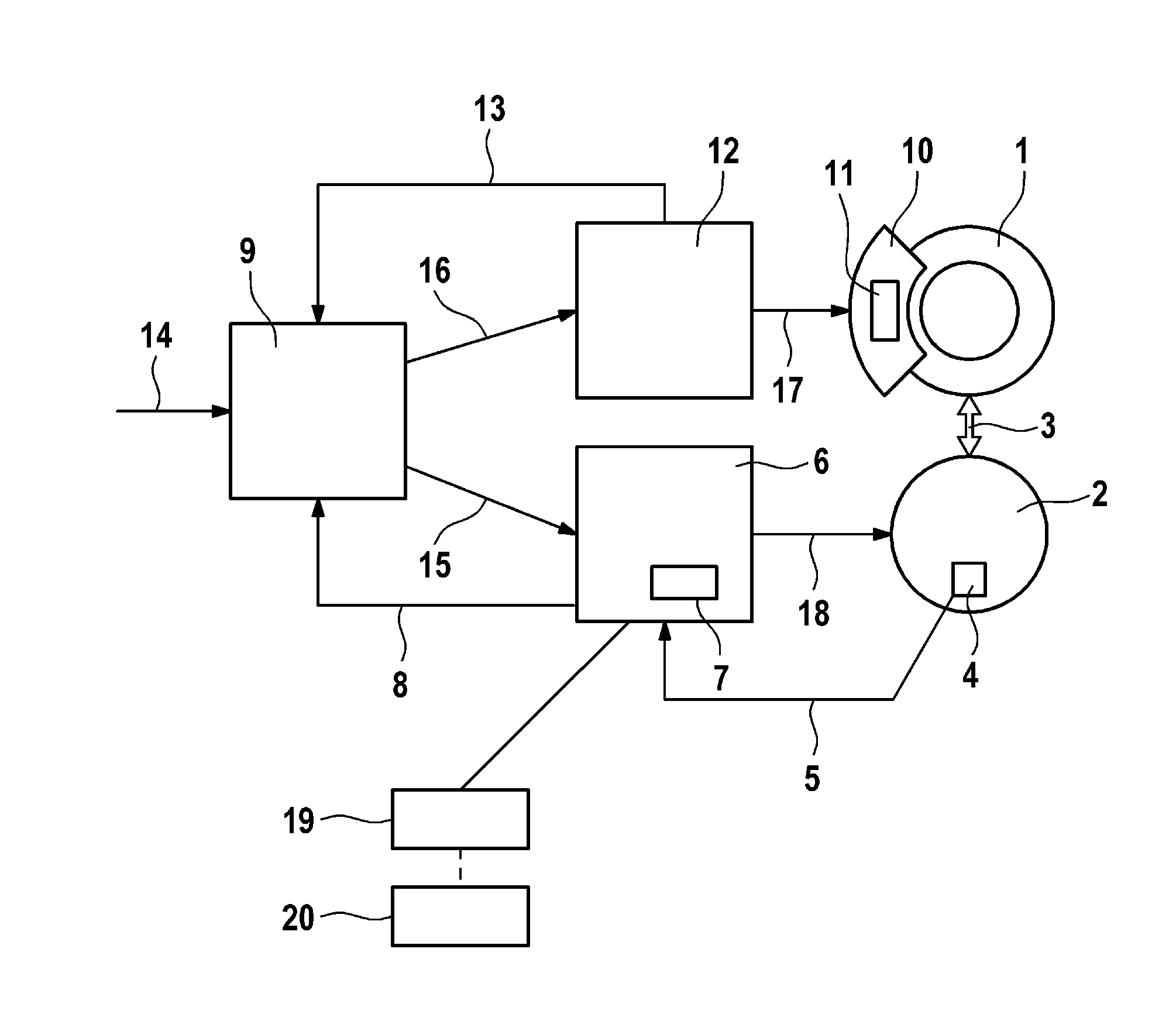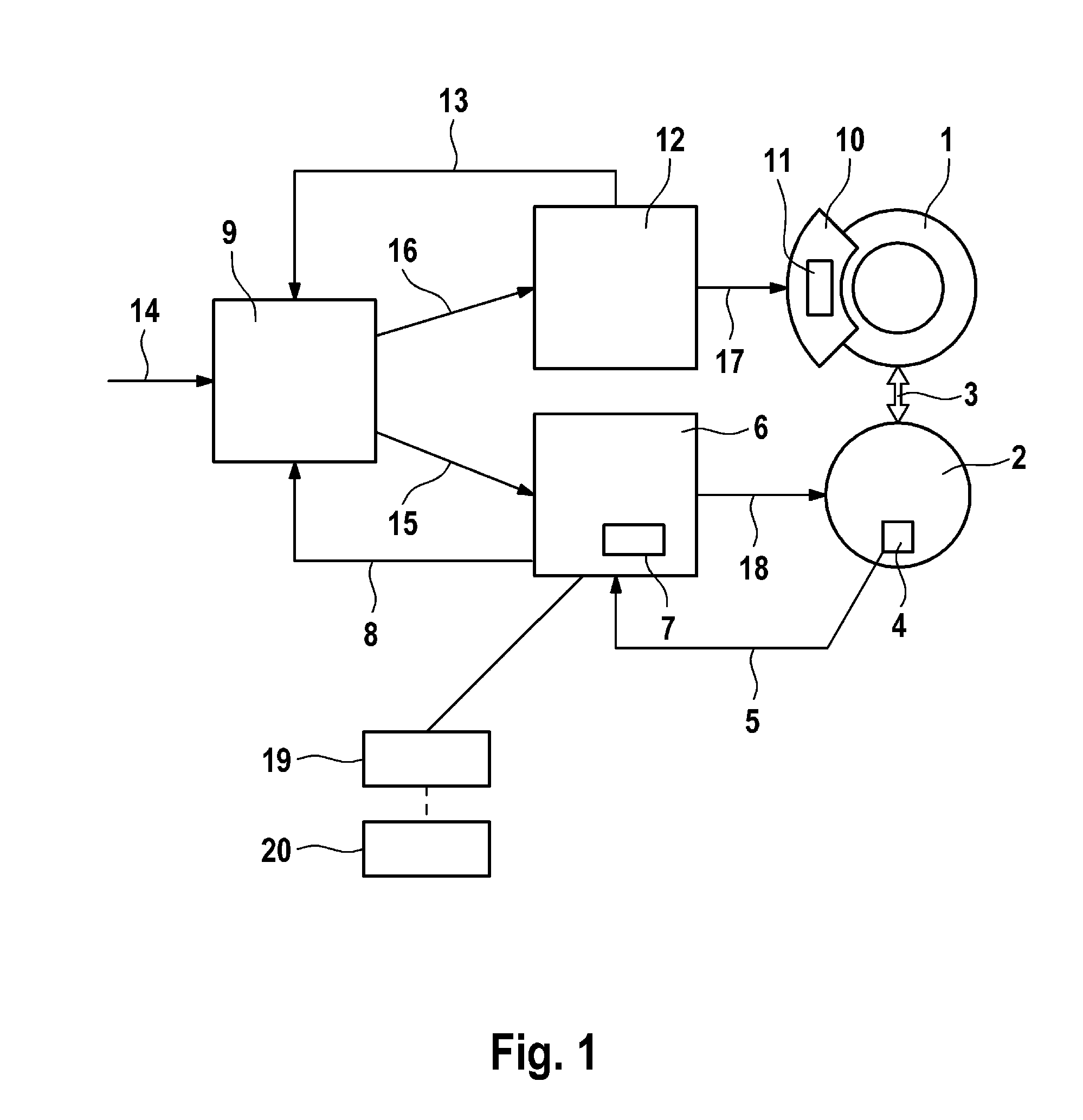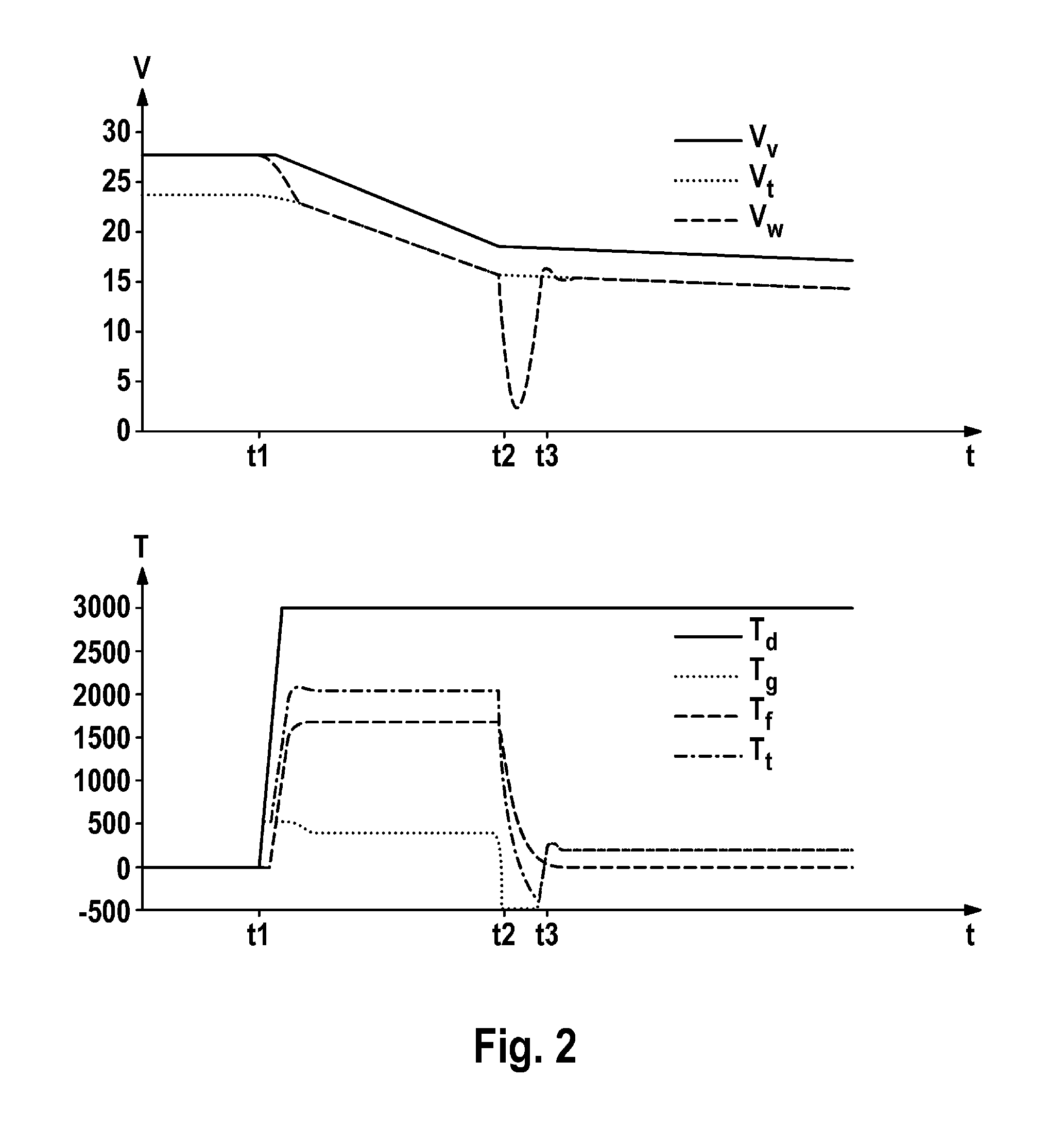Method for the Automatic Control of Wheel Brake-Slip and Wheel Brake-Slip Control System for a Motor Vehicle With an Electric Drive
a technology of automatic control and control system, which is applied in the direction of braking components, field or armature current control, program control, etc., can solve the adverse effect of vehicle movement dynamics control system on vehicle driving behavior stability, inability to keep a wheel slip in a stable range, and inability to set a friction brake sufficiently to achieve a coefficient of friction of the road, etc., to achieve advantageously reduce the wear of the brake lining, improve the stability of the vehicle, and improve the effect of stability
- Summary
- Abstract
- Description
- Claims
- Application Information
AI Technical Summary
Benefits of technology
Problems solved by technology
Method used
Image
Examples
Embodiment Construction
[0020]According to FIG. 1, a wheel 1 of a vehicle (not shown) is connected to an electric drive 2 by means of a mechanical connection 3. The vehicle can be, for example, a passenger car, a truck or a motor cycle. The electric drive 2 comprises an electric motor (not shown). In another exemplary embodiment of the invention which is not shown, the electric drive 2 can also comprise a plurality of electric motors, with the result that each wheel of the vehicle can be driven or braked individually by means of an electric drive. In a further embodiment of the invention which is not shown, the electric motor 2 drives an axle of the vehicle via a differential gear mechanism. In particular, the axle can comprise double wheels.
[0021]The electric drive 2 can either drive the wheel 1 or, if the electric motor is operated as a generator, can generate a generator-type braking torque, with the result that the wheel is braked. The electric drive 2 also comprises an electric motor angle (or angular...
PUM
 Login to View More
Login to View More Abstract
Description
Claims
Application Information
 Login to View More
Login to View More - R&D
- Intellectual Property
- Life Sciences
- Materials
- Tech Scout
- Unparalleled Data Quality
- Higher Quality Content
- 60% Fewer Hallucinations
Browse by: Latest US Patents, China's latest patents, Technical Efficacy Thesaurus, Application Domain, Technology Topic, Popular Technical Reports.
© 2025 PatSnap. All rights reserved.Legal|Privacy policy|Modern Slavery Act Transparency Statement|Sitemap|About US| Contact US: help@patsnap.com



